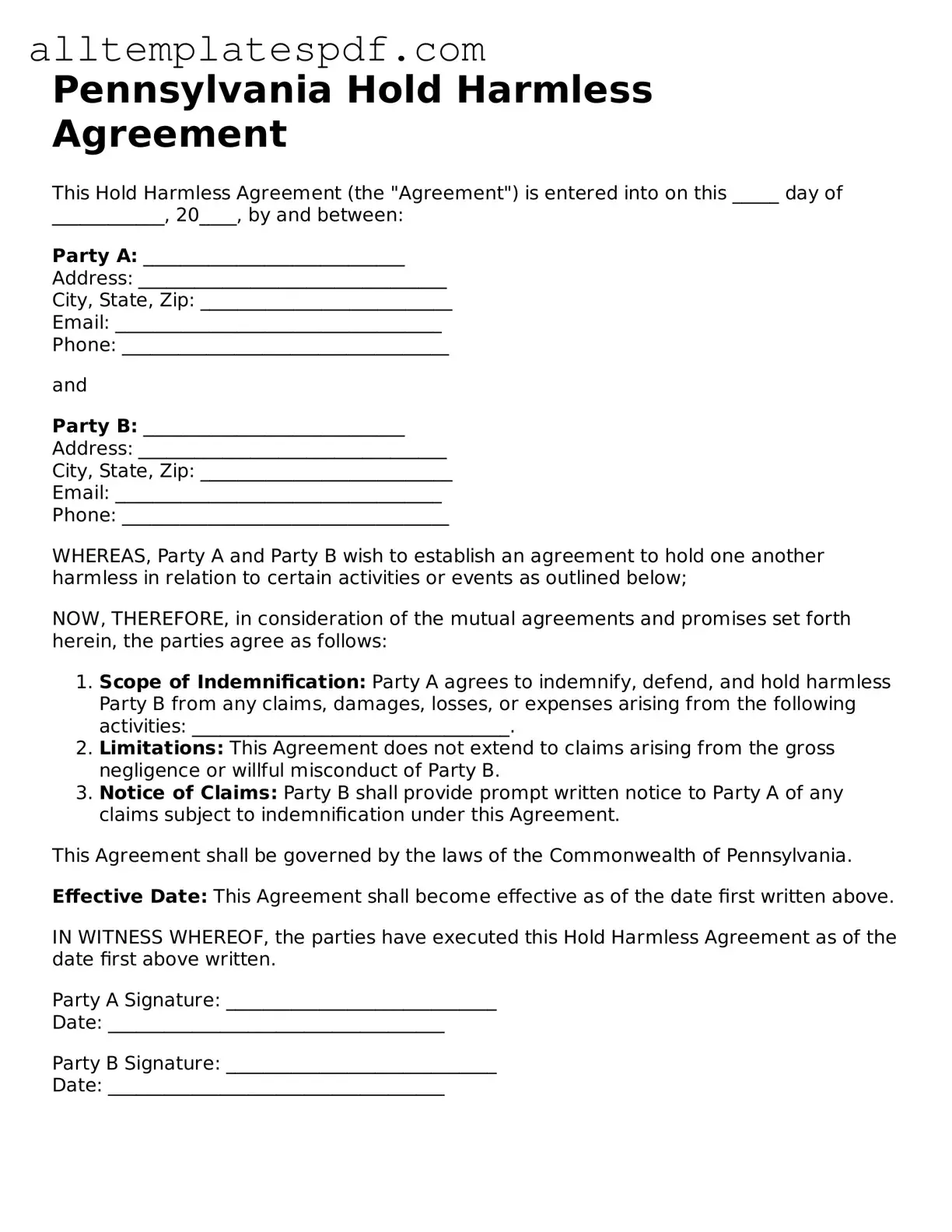Filling out the Pennsylvania Hold Harmless Agreement form can be straightforward, but many people make common mistakes that can lead to issues later. One frequent error is failing to read the entire document before signing. Understanding the terms is essential. Rushing through the form can result in overlooking critical details.
Another mistake is not providing accurate information. When individuals enter incorrect names, addresses, or dates, it can create confusion. This might invalidate the agreement or lead to disputes about its terms.
People often neglect to clarify the scope of the agreement. The Hold Harmless Agreement should specify what liabilities are covered. Without this clarity, the agreement may not serve its intended purpose, leaving parties exposed to unforeseen risks.
Many individuals also forget to date the agreement. A missing date can create ambiguity regarding when the agreement takes effect. This can complicate matters if a dispute arises later.
Additionally, some people fail to include all necessary parties in the agreement. If a party is omitted, they may not be protected under the terms of the agreement. Ensuring all relevant parties are included is crucial for comprehensive protection.
Another common error is not having the agreement reviewed by a legal professional. While it may seem unnecessary, legal advice can highlight potential pitfalls and ensure that the agreement meets all legal requirements.
People sometimes sign the agreement without fully understanding the implications. It is vital to grasp what liabilities one is agreeing to assume. Ignorance of these terms can lead to significant consequences down the line.
Not keeping a copy of the signed agreement is another mistake. Individuals should always retain a copy for their records. This can be essential if questions arise about the agreement's terms or validity in the future.
Lastly, some individuals may overlook the need for witnesses or notarization. Depending on the circumstances, having a witness or notary can lend additional credibility to the agreement. Skipping this step can weaken the document's enforceability.
